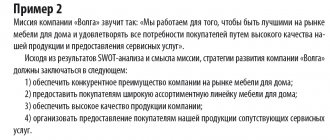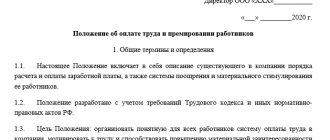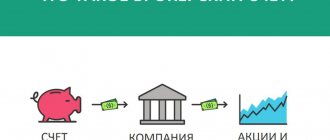Today, active marketing is an integral element of retail business. But not all promotions are equally effective, and sometimes discounts bring only losses to store owners. An example is the story of an entrepreneur from Novgorod:
“A year ago I opened a department selling men’s clothing. Gradually, a lot of slow-moving models accumulated, which I decided to sell at half price. But the level of sales of illiquid goods remained approximately at the same level. As a result, I simply lost half the value of the goods, and a theoretically good promotion turned into losses.”
Every entrepreneur can find themselves in a similar situation. This is also due to the fact that in small retail it is quite difficult to predict the effectiveness of promotions, because small stores rarely use the services of professional marketers. All that remains is to get the hang of it from your own experience.
To ensure you get the most out of your stocks, it is recommended to use the best performing stocks. We will talk about just such promotions in today’s article.
Does the store need a promotion?
The action being carried out must have a goal. After all, there is no point in reducing the price of a product if they will buy it anyway. The exception is marketing techniques that create the illusion of benefit for the buyer. In this case, the entrepreneur receives an increase in traffic while maintaining profits.
You need to plan the sequence of promotions several months in advance.
It is advisable to carry out promotions in a retail store in situations aimed at:
- Information about the opening of the store.
- Creating an information channel so that the store is talked about in social networks and regional media.
- Entertaining customers, stirring up interest in the store.
- Advertising a new product.
- Liquidation of stale goods.
- Short-term sales growth.
- Standing out from competitors.
These reasons can be combined and complement each other. The main goal of carrying out marketing campaigns is to increase the profitability of the store in the short or long term.
Important promotion rules
So, before you approach launching your promotion, it is important that they meet some rules.
- The promotion does not infringe on the interests of any buyers. For example, if you hold them for VIP clients, you cannot block access to the point of sale for others, otherwise people will turn away from you.
- You should not hold a promotion and then close it before the officially established deadlines.
- It is not recommended to conduct promotions that are aimed at advertising other brands.
- You should not hold promotions on the same day as your competitors. It's better to do it the next day.
- Try to make promotions different from others held in the niche where you work.
- Match your strengths with your capabilities. If you decide to give a gift for each purchase of a certain amount, then be sure to calculate the approximate number of gifts you should give. Otherwise, you risk either high costs if there are a lot of gifts, or dissatisfied customers if there are not enough gifts for everyone.
Rules for holding promotions
It is difficult for managers of small stores to properly plan an advertising campaign themselves.
Entrepreneurs must track the financial effect of their promotions
Below are rules and tips that will simplify planning your events and increase their effectiveness.
- Carrying out joint advertising with a partner. For example, according to the principle “Buy a pair of shoes from us and receive a coupon for free repairs at XXX company.”
- Focusing on the interests of the target audience, and not on your own preferences. It is especially important to observe this principle in clothing, footwear, and jewelry stores.
- Each promotion must have an acceptable reason, otherwise buyers may perceive discounts as a way to get rid of defects. The declared reason could be, for example, the liquidation of a seasonal product or a pre-holiday sale.
- The promotion must be advertised. A printout pasted on a store door is unlikely to be read, but people will definitely pay attention to a street sign.
- Avoid unnecessary words; the buyer must immediately “swallow” the advertising slogan.
- Prepare sellers for the promotion and get them interested in the results.
- Analyze the results of the promotion using the ECAM warehouse accounting program. This will allow you to identify the most effective advertising techniques over time.
When carrying out promotions, entrepreneurs are recommended to consult an advertising agency. Advertisers usually know the preferences of the local audience and are able to suggest the most effective ways to attract them to the store.
Advertising campaign
Many companies operating in various areas of business are accustomed to holding promotions. And customers loved the price reductions and the provision of various bonuses.
But each advertising campaign is accompanied by a number of actions aimed at correctly determining the effectiveness of the said event.
The development of an advertising campaign and its implementation are two inextricably linked processes.
At its core, an advertising campaign is indirect advertising, the main purpose of which is to increase the level of consumer confidence in a particular organization.
In order to conduct a promotion, each company is required to perform a number of actions:
- Designate the initiator of the event.
- Determine the time frame within which this event will take place.
- Determine the number of prizes that will be included.
- Inform clients about the terms and conditions of the promotion.
- Familiarize consumers with the conditions under which they can receive winnings.
Any promotion or competition must be accompanied by the execution of a sufficient number of papers. This is necessary for reporting to regulatory authorities.
In addition, it is necessary to draw up an order from the manager, as well as an estimate containing all the necessary calculations.
Discount promotions
Price reduction promotions are carried out in almost all retail stores, because their organization is simple and requires a minimum of time. The purpose of such promotions is to increase the number of buyers who are able to recoup the costs of their implementation. Simply reducing the price to please regular customers is not worth it, because the retail business is conducted for the sake of making a profit for the owner.
Part of the costs of the discount promotion can be transferred to the suppliers of the goods
Effective promotions with price reductions include:
- “product of the day” discount;
- discount for volume, including according to the “1+1=3” principle;
- discount on a defective product;
- seasonal sale;
- a discount dedicated to a specific event (store anniversary, March 8, client’s birthday, etc.);
When conducting discount promotions in retail stores, the following important nuances should be taken into account:
- Consumers practically do not react by increasing demand with discounts ranging from 10-15%. Interest arises only for a more significant price reduction.
- For piece goods, it is better to indicate on the price tag not the discount amount as a percentage, but the real benefit in rubles.
- The range of products with reduced prices should be limited. It is more effective to set larger discounts on several popular items than on the entire product category as a whole.
- Promotions with reduced prices should be limited in time in order to develop rush demand.
The seller is obliged to inform the buyer about all defects of the goods
Discount promotions in a retail store need to be held regularly so that customer interest in the outlet does not wane.
What do shares give to the owner?
You've probably heard the expression "controlling interest" - usually in movies, a villain insidiously takes over a company, gaining 50% and one more share. Although this villain is not a 100% owner, he still gains control over the company, because he owns most of it.
But even if you did not buy a controlling stake, but only a tiny piece of the company, you become a shareholder and also receive rights, the main of which are:
- the right to vote at a meeting of shareholders and thus participate in the management of the company (if the share is voting);
- the right to receive dividends - part of the company’s profit (if they are paid);
- the right to receive part of the company's property in the event of its liquidation.
Why is voting rights important? Because all the most important decisions are made by the general meeting of shareholders. Including decisions on liquidation and reorganization of the company. It is the meeting that decides how best to manage the profit at the end of the year: direct all the money to business development or part of it to pay dividends.
Money back promotions
Such promotions are analogues of discounts, but are psychologically aimed not at reducing costs, but at generating income. Such events expand the target audience, attracting people to the retail store who like to receive benefits rather than save money.
You can alternate between cash back promotions and regular discounts.
Examples of cash back promotions are:
- Refund to the buyer X% of the check amount immediately or on the next purchase.
- Increase in account balance by X% of the top-up amount.
- Top up your phone number by X% of the check amount
Cash back promotions have shown particular effectiveness in grocery stores as part of cross-selling. In this case, the client does not receive the money itself, but the opportunity to purchase goods of another category for a certain amount. For example, if you buy 3 kg of meat, you can get one of the spices for free. In this way, buyers are encouraged to test other products, which in the long term leads to an increase in the average check.
It is quite simple to issue cash back promotions in a retail store when using the EKAM warehouse accounting program. It allows you to quickly create discounts and return part of the money paid through the online cash register. Also in the program, the manager can always analyze the results of the action.
Promotional packaging
Promotional packaging means the wrapping or soldering of a standard product with a bonus product. Having looked at the offer, the buyer must clearly understand his benefit. Therefore, it is recommended to indicate on the packaging the regular price of both products, their promotional value and the amount of the discount received. The standard benefit in such promotions is 20-50%.
In grocery stores, similar methods work effectively when selling beer. They can be combined with a discount for volume, for example, a pack of crackers or nuts is attached to a package of 6 bottles. As a result, the store receives a large average check, additional profit, and the buyer leaves satisfied with the bonus he received.
Loyalty programs
With the ECAM warehouse accounting program, each retail store can create its own loyalty system. It involves maintaining a client base and issuing individual discount cards. The costs of implementing such a system are quite low. In return, the entrepreneur receives “attached” customers, as well as a multifunctional tool for doing business in the form of a warehouse accounting program.
A discount card is a magnet that attracts customers to the point of sale
The cards used can be:
- bonus;
- discount;
- club
Loyalty programs are mutually beneficial for the buyer and the store. The client receives benefits in the form of a discount or free bonus money, and the store achieves customer loyalty. Such promotions allow you to stabilize revenue and dynamically increase your customer base. In addition, the warehouse accounting program allows you to send promotional materials to existing contacts in the database.
Mastering sampling
Quite often, buyers are afraid to try a new product because they doubt its characteristics. To stimulate sales of new products, sampling can be used, which allows a person to check the quality of the product or service offered for free.
You can ask the supplier for a product for tasting free of charge.
Sampling includes:
- Distribution of mini product samples.
- Use of promotional packages that include new items.
- Free product tasting in the store.
- Providing the first service free of charge (for example, the first haircut at a hairdresser or the first installation of protective glass on a smartphone).
It is beneficial to use sampling to conquer the market at the start of a business, when the target audience is still strongly tied to competitors. Free goods or services are always in demand, and they will also help form a positive connection between the buyer and the store.
Coupon shares
A coupon can be any piece of paper that gives you the right to receive a discount when visiting a store. This could be a flyer distributed to people on the street, or a special form printed at the online checkout. People tend to put coupons in their wallet or bag, and checking these items allows you to regularly remind the person about the store.
It would be better if the discount coupon could fit in a standard wallet
There are many options for distributing coupon promotions. The most effective of them are direct distribution by a retail store, distribution on the street, and placement of cut-out coupons in printed publications. Essentially, a coupon is a “reminder” that forces the buyer to return to the store and make purchases.
Ordinary and preferred
Shares are primarily divided into two types:
- Ordinary (in slang “common” or “simple”)
- Privileged (in slang “prefs”)
The former give the right to participate in annual general meetings of shareholders (AGM). They have the right to vote. They are also called “voting shares.”
The preferred ones do not have voting rights, but they have higher dividend income and advantages in receiving part of the money when the company is liquidated.
For the average investor, there are no significant differences between these types. Most small shareholders trade on the stock exchange to make a profit, and not in order to take part in the State Assembly and have voting rights there.
Taking into account this, that preferred shares provide higher dividend income, they are preferable for small investors.
You can see a table comparing preferred and ordinary shares in the article:
- Preferred and ordinary securities - the main differences
It is worth noting other subtypes of preferred securities:
- Participating and non-participating (right to receive larger dividends)
- Cumulative and non-cumulative. If dividends are not paid in bad years, they do not disappear anywhere, but accumulate. They are paid in subsequent years to the extent possible. They are also called accumulating
- Convertible and non-convertible (possibility of exchange for ordinary ones)
Charity events
When holding charity events in retail stores, it is worth focusing customers' attention on the positive. Taking care of sick children and stray dogs is good, but it is better to motivate people with personal benefits. For example, allocate 1% of the purchase amount to install benches in the area where the retail outlet is located, or to plant trees.
Give customers a reason to be proud of participating in a charity event
Charity events help create an image of a store involved in customer problems. Clients, in turn, see their contribution to improving the improvement of the area and feel involved in good deeds.
When conducting charity events in a retail store, you need to be honest about spending money for the intended purpose, and also understand that the ultimate goal of any marketing effort is to generate profit through additional sales.
Registration of share issue
Until the company's securities are registered, it is impossible to carry out any transactions with them, and if they were nevertheless concluded, they are not valid.
To register, you must provide copies of the following documents, certified by a notary, signed and sealed by the issuing company:
- Certificate of state registration of a joint stock company.
- Charter, which includes all changes (additions).
- Internal documentation of the enterprise, which serves as confirmation of the authority of the issuer who decided to issue securities.
- Certificates of state registration of previous issues (if any).
- Permits (licenses) for the types of activities of the issuing company.
- Minutes of the meeting of founders at which the decision to establish the JSC was made.
- Agreement on the establishment of a joint-stock company.
- Certificate of registration with the tax authority at the location of the issuer.
- Information letter from the State Statistics Committee on registration in the statistical register.
- Latest annual and quarterly financial statements (with all attachments in accordance with the requirements of regulations).
- Auditor's report for the last reporting period, certificate of financial condition of the issuing company for the past year.
- Bank certificate confirming payment by the founders (shareholders) of the nominal price of the shares, including a list of contributions indicating the number and date of payment.
- Receipt for payment of state duty (0.1% of the total amount of the issue).
Contests, lotteries and instant surprises
The chance of winning a big prize is a powerful tool for driving sales. The most difficult moment when holding competitions and lotteries is to ensure a sufficient level of interest from potential participants. It is unlikely that a person will participate in the drawing if his result is published only in a year.
If desired, each store can order individual scratch cards from an advertising agency
A standard lottery scheme in a retail store looks like this:
- buy certain products in the right quantity;
- register your check;
- get the opportunity to win a super prize, as well as a number of incentive prizes.
The recommended period for conducting such drawings is 3-5 weeks.
An attractive prize motivates the buyer to tell family and friends about the promotion, which creates a “word of mouth” effect. As a result, even people who have never entered the store will come to shop. After the drawing, a number of new customers will become regular customers, which will help recoup the costs.
Instant lotteries using scratch cards are also effective. But organizing such promotions is a difficult task for ordinary retail stores.
When drawing prizes, it is important to ensure maximum transparency of the results. No one should doubt that the winner was determined by chance. This will further enhance the store’s image in the eyes of customers.
Algorithm for developing an advertising campaign
The algorithm of actions that need to be performed when carrying out an advertising campaign will look like this:
- Make information about the promotion accessible, in other words, do not hide information from potential buyers. It is necessary to inform consumers about the promotion, for example, this can be done by posting information at bus stops or by submitting a corresponding announcement on the radio. Also, we should not forget about the classic advertising options - billboards, leaflets, flyers.
- It is necessary to calculate the budget of the action, in other words, the amount of money that you are willing to spend on carrying out the action. If the event is planned with the help of an advertising agency, you should wait until the amount is announced, otherwise it may turn out that this particular promotion will be valued at the amount of the planned budget.
- Determine the time frame in which the event will be held. Practice has shown that the most effective time frame is 2–3 weeks, otherwise the promotion becomes addictive to the buyer and ceases to be interesting. It is recommended to take a break of 2 weeks between events.
- Think about what indicators will be used to analyze the effectiveness of the campaign. It is a mistake to assume that the analysis will consist only of calculating the level of sales, since factors such as a mannequin, hanging clothes on hangers, etc. can independently influence the increase in sales in the store.
Information campaigns
Such promotions are carried out in order to attract attention to the store from the general public and the media. There are no ready-made recipes for such events, because their essence lies precisely in exclusivity.
The best promotions are those about which information is distributed independently
An example is a promotion carried out by a jeans store in Lithuania. It was announced in advance that everyone who enters the outlet wearing only underwear will be able to try on and receive one pair of jeans for free. This freebie was provided only during the first 10 minutes of the store's opening. As a result, in the morning a crowd of naked people gathered in front of the entrance, wanting to take part in the action. Naturally, this allowed the store to become famous throughout the country.
In the example given, the cost per share turned out to be minimal - 30 pairs of jeans at the purchase price, and the result was stunning. Such original events are the most effective from a marketing point of view.
Evaluation of the effectiveness of ongoing actions
Advertising campaigns should bring profit, but how to evaluate it? To do this, it is recommended to use the EKAM warehouse accounting program, which allows for a detailed analysis of sales. The application is capable of assessing profitability in the context of individual products or assortment categories. As a result, the entrepreneur can clearly compare income before and after the promotion.
The ECAM program allows you to analyze sales remotely
The warehouse accounting program also allows you to maintain a customer base, create loyalty programs, and set discounts. Thus, it is a powerful tool for managing marketing campaigns.
Individual promotional efforts do not always produce good results, but entrepreneurs must be persistent in their efforts. There will certainly be a promotion that will ensure an influx of a large number of new customers into the retail store. You just need to constantly try different options to attract customers and analyze their effectiveness.










